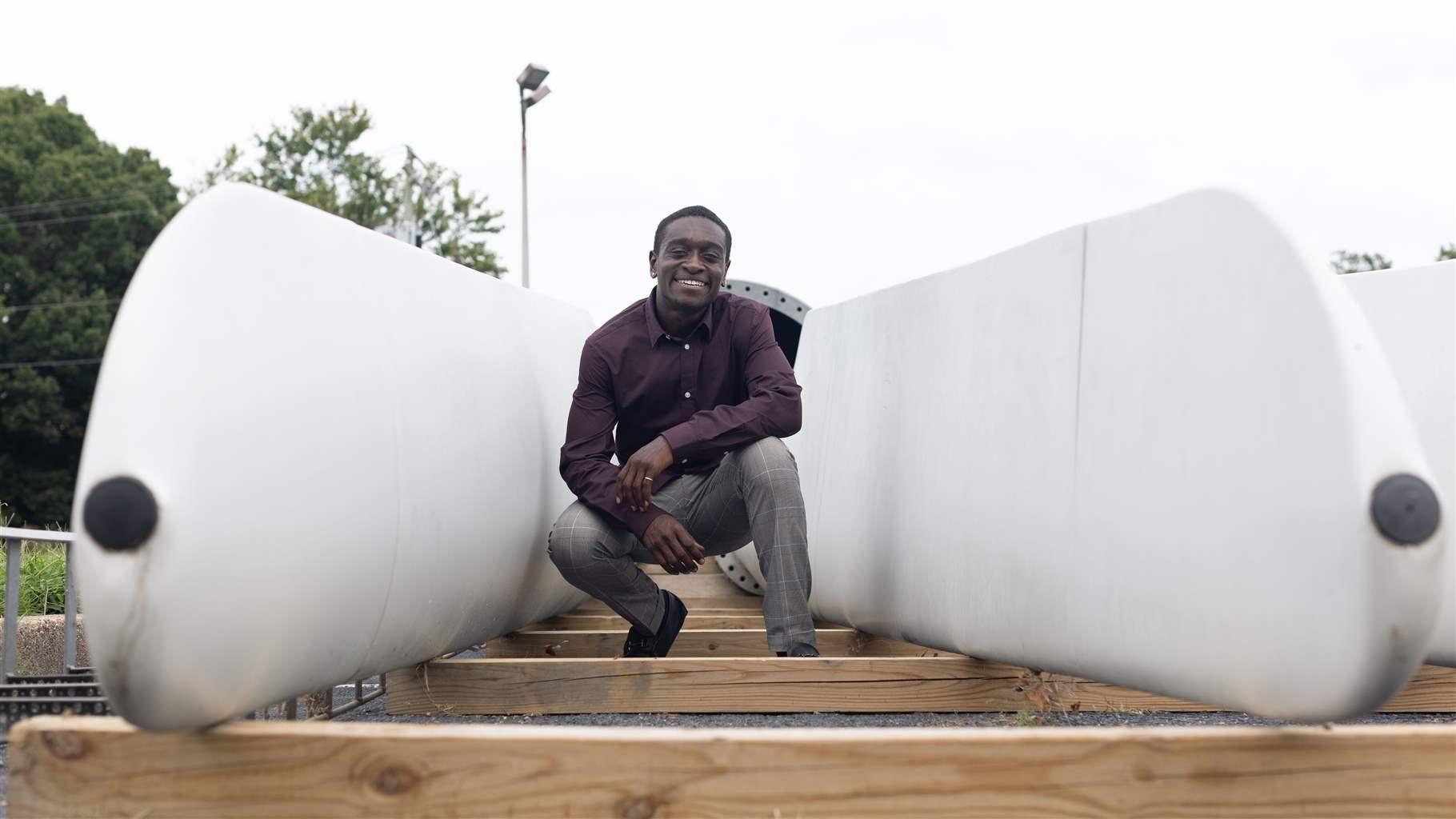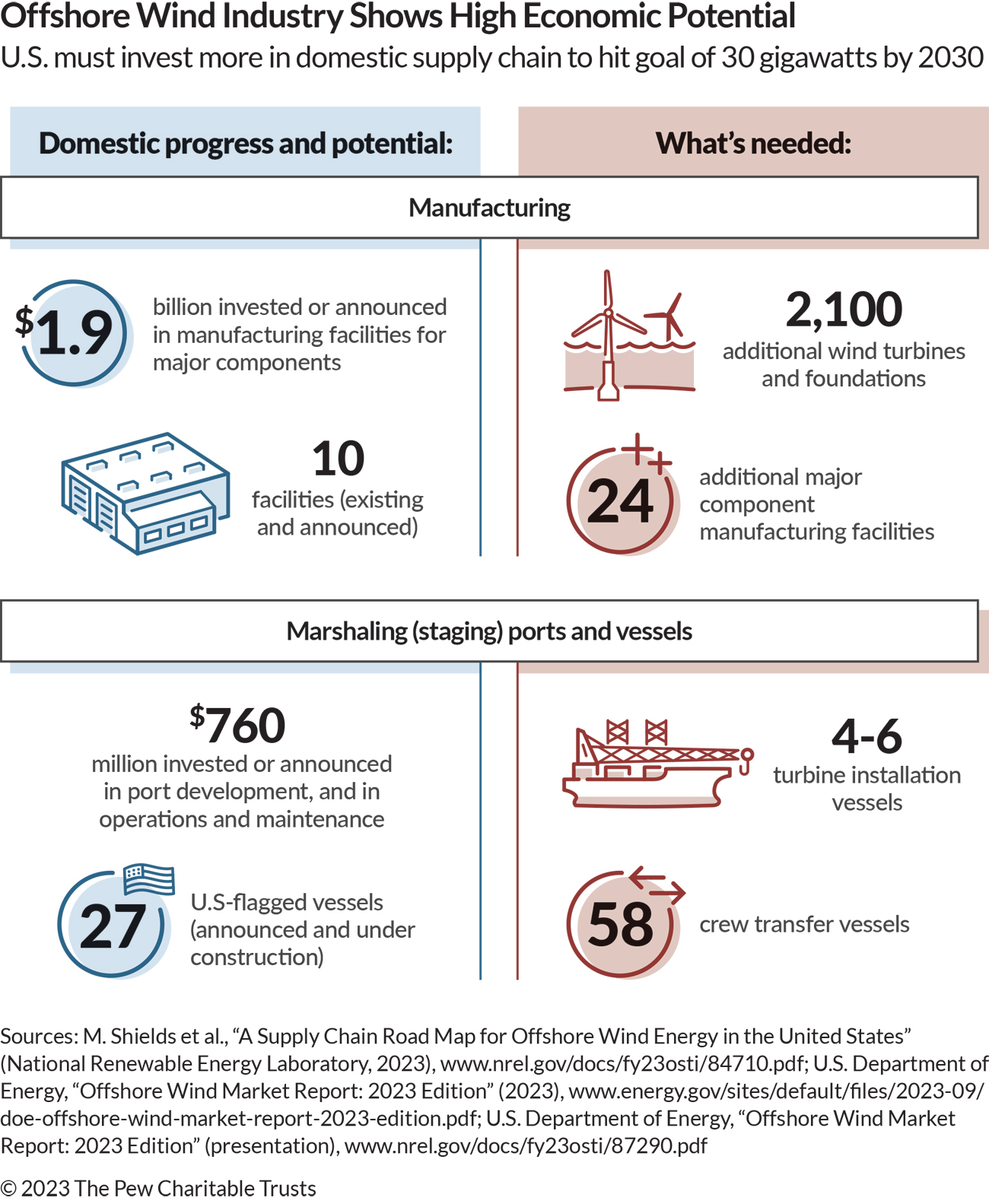Offshore Wind Industry in U.S. Needs Supply Chain Investments
Demand for cleaner energy is spurring economic development in early-adopting states

As the push to move to a clean energy economy in the U.S. accelerates, the offshore wind (OSW) industry has the potential to advance the transition by creating jobs, improving infrastructure, and stimulating local economies. With a national goal of developing 30 gigawatts (GW) of energy from OSW by 2030, a U.S.-based industry could attract $12 billion in direct private investment annually while reducing overall emissions, according to the Department of Energy (DOE). Generating 30GW of energy from offshore wind would power approximately 10 million homes annually.
Although there is growing demand, without accessible, predictable, and affordable supplies to complete these projects, the promise of the domestic offshore wind industry is at risk. To better realize OSW potential in the U.S., the market will need to see enabling policy and infrastructure investments necessary to fortify the OSW supply chain. This could lead to the creation of up to 49,000 manufacturing and supplier jobs, according to the DOE’s National Renewable Energy Laboratory (NREL)—a significant increase from the just over 1,000 workers the industry employed in 2022.
In fact, as of mid-2023, current and planned OSW projects amounted to 52GW of energy—nearly double the 2030 goal.
According to NREL’s analysis, $22.4 billion in public and private investment is needed by 2030. This includes funding for upgrading ports to prepare and stage wind components, building new vessels to facilitate turbine transfer and installation, and facilities to make and assemble turbine components. To hit the 30GW-by-2030 goal, the U.S. would need 2,100 OSW turbines operating and transmitting power to the grid, NREL says. To reach that number will require 58 crew transfer vessels, four to six turbine installation vessels, and 23 more major component manufacturing facilities.
Building out a robust domestic supply chain—from the massive blades that power the wind turbines to the nuts and bolts that hold them together—will be key to the success of the OSW industry and the continued growth of the American clean energy economy. As the OSW industry navigates through current headwinds caused by global supply chain constraints and inflation, the U.S. government can alleviate pressure and streamline efficiency by doubling down on the domestic supply chain.
The U.S. supply chain to date
As the U.S. domestic supply chain grows from infancy into full-fledged viability, there are ways states can attract industry development with tax incentives, grants, workforce training programs, and more. These incentives, coupled with substantial federal support—including the Department of Transportation’s (DOT’s) Port Infrastructure Development Program grant and the investment and production tax credits for offshore wind—are already helping some states make the OSW market far more attractive to industry.
Already, through May 2023, industry and government invested $2.6 billion in 12 offshore wind ports and manufacturing facilities across the country, as summarized by the DOE. These facilities will produce wind turbine components such as blades, towers, floating platforms, and cables for years to come. Even more supply manufacturing facilities have been announced across a dozen states, which will boost economies from Massachusetts to Texas once they come online.
A path forward
With smart policies and forward-looking infrastructure investments, coastal and inland states can benefit from the burgeoning multibillion-dollar OSW industry. Taking this route would spur job gains and economic development and help build a domestic OSW supply chain that can power the U.S. toward a fully clean energy future.
Laura Lightbody directs The Pew Charitable Trusts’ energy modernization project. Courtney Durham Shane works on the project.














